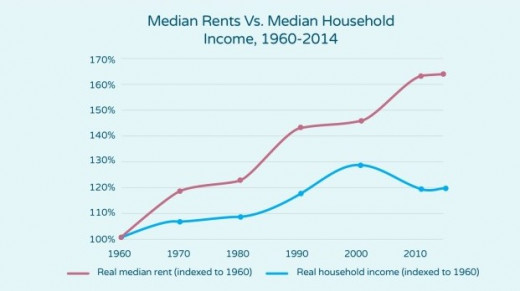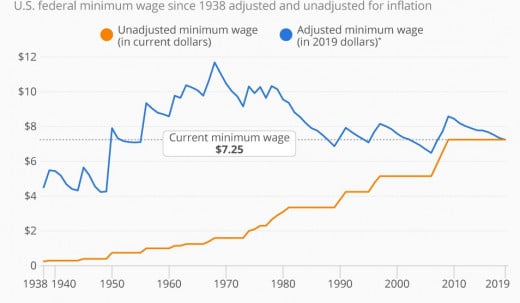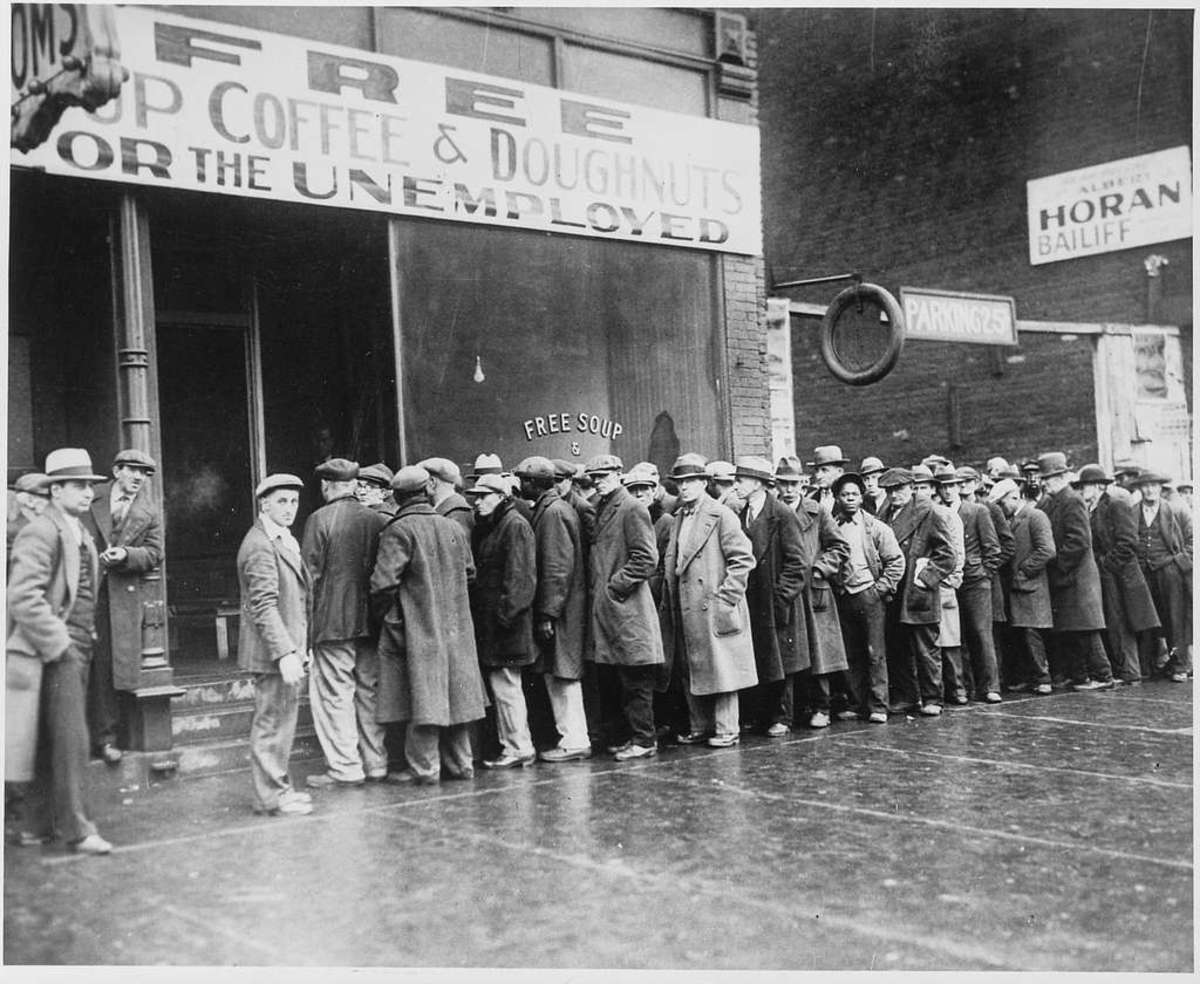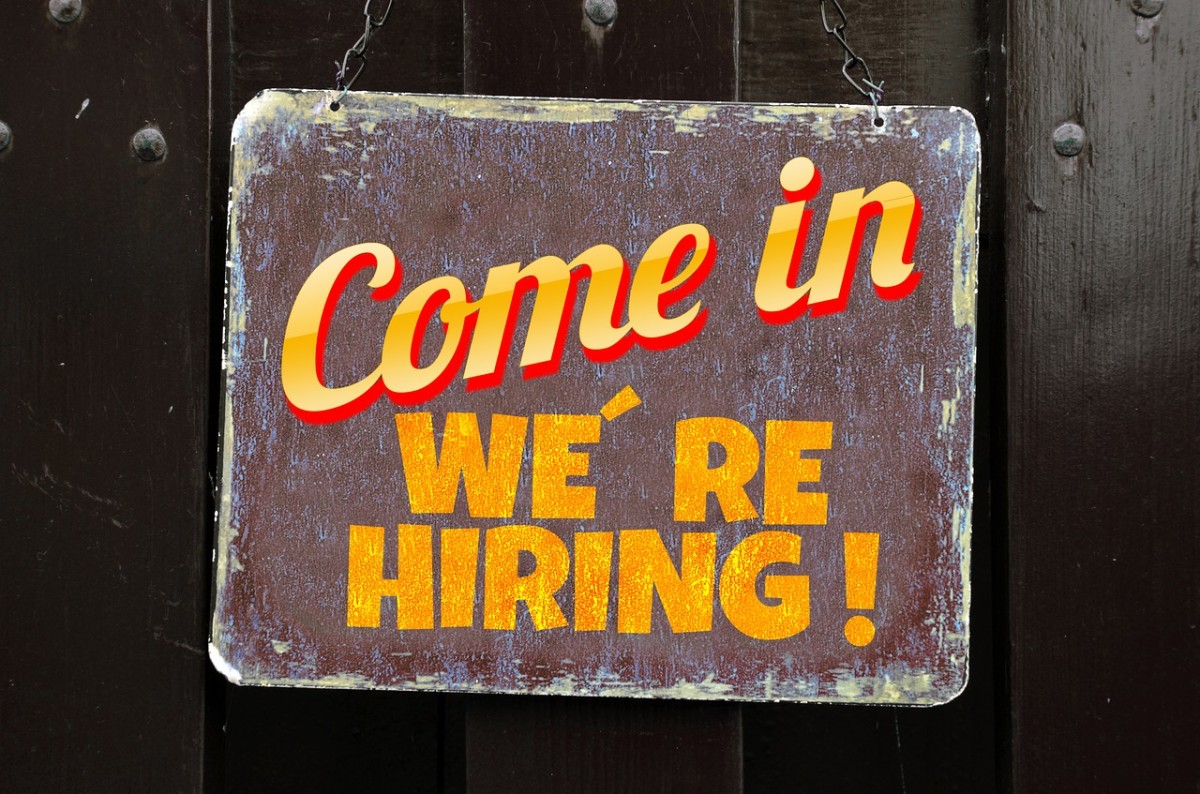Coronavirus is Bad News for America's Working Class

The Minimum Wage Problem
America’s low wage workers are being left behind. In America today, workers who earn the federal minimum wage have an average of $6,800 less per year to spend on food, rent, and other essentials than they did 50 years ago (Cooper). According to Sharon Parrot, senior vice-president at the Center on Budget and Policy Priorities, “when people live paycheck to paycheck, it’s not that they’re managing their money poorly…instead, their housing costs are taking up a disproportionate share of their incomes" (Griswold). For low or minimum wage workers, missing only one or two days of work can mean struggling to afford food or rent for a month or longer. And as of this year, forty percent of Americans don’t have four hundred dollars cash to spare in an emergency (Griswold).

Poor in a Pandemic
Since the start of the pandemic, disgruntled essential workers have been forced to work on the front lines with little to no extra compensation in the form of hazard pay. The majority of these workers don’t have the option to quit – they have no savings and wouldn’t qualify for unemployment even if they feel unsafe performing their job duties. Now, with rumors spreading that people make more on unemployment than previously at their jobs, the administration has successfully pitted the working class against each other as embittered essential workers put their lives on the line to bag your groceries for eight bucks an hour.
Since the start of the pandemic, the working class has been expected to put their lives on the line to carry the burden of stimulating the economy by either working to keep essential businesses open, or spending their meager wages to help keep the economy afloat. The extra $600 in weekly unemployment compensation helps to maintain a level of consumer spending that prevents the U.S. economy from total collapse. By comparison, the average median wage in the first quarter of 2020 was $957 per week, and the annual salary of a rank-and-file member of Congress is $174,000 (roughly $3,300 per week) (Strand).
Nicole Ferrari, a single mother of four who owns her own business, wanted to apply for a small-business loan through the Paycheck Protection Program. When she spoke to a customer service representative, she was informed that the loan program was out of money – the same loan program that gave assistance to Ruth’s Chris and Shake Shack (Griswold).
Disdain for the Working Class
If the thought of poor people on unemployment insurance making enough money to live makes your stomach churn, perhaps you are looking at the wrong side of the problem. According to the Bureau of Labor Statistics, the federal minimum wage was equivalent to $10.90 per hour in 1968 (compared to a meager $7.25 per hour today). In real terms, the minimum wage is more than thirty percent lower than it was fifty years ago. Meanwhile, the median price for a home in the U.S. is now $199,200 – up from $47,200 and $119,600 in 1980 and 2000, respectively (Martin).
Working a minimum wage job also means that your hours are often not guaranteed. For example, servers might get cut early if there’s not enough business at the restaurant that day. If it happens once a week or more, you might struggle to pay your bills on time that month. And you can forget about saving for retirement or emergencies. According to Yahoo Finance, 58% of Americans have less than $1,000 in savings, in large part due to the fact that minimum wage increases are disproportionate to the cost of living in the U.S. (Huddleston).

A Strong Middle Class Drives Growth
A thriving middle class is a prerequisite for economic growth, entrepreneurship, and innovation. A strong middle class is a source of trust, increasing efficiency in business transactions, and provides protection against credit booms and busts. Former President Barack Obama once stated that “when middle-class families can no longer afford to buy the goods and services that businesses are selling, it drags down the entire economy from top to bottom…that’s why a CEO like Henry Ford made it his mission to pay his workers enough so they could buy the cars they made” (Madland). A higher minimum wage benefits everyone in the economy, including small businesses, corporations, and the upper class.
An economy that is top-heavy in wealth is not good for anyone, and inequality is responsible for some of the biggest problems threatening American’s quality of life today including home foreclosures, high unemployment, and lack of upward mobility. Increasing the minimum wage is key to reversing decades of downward pressure on the working class. The Raise the Wage Act of 2019 was recently passed by the U.S. House of Representatives, which would raise wages for a total of 33.5 million U.S. workers (Cooper).
References
Cooper, R. (2019). Labor Day 2019: Low-wage workers are suffering from a decline in the real value of the federal minimum wage. Retrieved August 01, 2020, from https://www.epi.org/publication/labor-day-2019-minimum-wage/
Griswold, E. (2020). How the Coronavirus is Killing the Middle Class. Retrieved August 01, 2020, from https://www.newyorker.com/news/dispatch/how-the-coronavirus-is-killing-the-middle-class
Huddleston, C. (2019, May 15). 58% of Americans Have Less Than $1,000 in Savings, Survey Finds. Retrieved August 01, 2020, from https://finance.yahoo.com/news/58-americans-less-1-000-090000503.html
Madland, D. (2013, February 20). The Middle Class Grows the Economy, Not the Rich. Retrieved August 01, 2020, from https://www.americanprogress.org/issues/economy/news/2011/12/07/10773/the-middle-class-grows-the-economy-not-the-rich-2/
Martin, E. (2017, June 23). Here's how much housing prices have skyrocketed over the last 50 years. Retrieved August 01, 2020, from https://www.cnbc.com/2017/06/23/how-much-housing-prices-have-risen-since-1940.html
Strand, M., & Lang, T. (2019, September 09). How Much do Members of Congress Get Paid? Retrieved August 01, 2020, from https://www.congressionalinstitute.org/2019/02/21/how-much-do-members-of-congress-get-paid-2/








